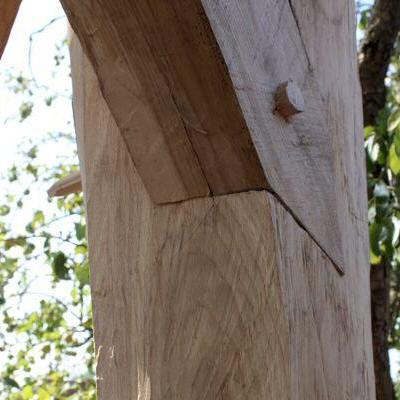
Timber Build Articles
Selecting Green Oak for Carpentry
by Norman Guiver

For various reasons, including the strength of the Euro, the source of cheap oak from the continent is fast drying up. However our German and French counterparts are still way ahead of us in the way they maximise their crop by adding value and we need to adopt some of their practises to do the same. What can a woodland owner or forester do with our own oak thinnings?
Identify your customer first. There is a growing market in this country for English oak for timber framers who need specific cuts from the tree, such as curves for braces and flare for jowl posts. These companies will buy in advance if the quality is right, logs can be milled on site and beams delivered straight to the customer, reducing transport costs.
Fully dimensioned curved braces air dried for a year can command £20+ per cubic foot. Jowl posts which used the flair in the “jowl” or “gunstock” even more. Timber for joinery needs to milled accurately i.e. it needs to be straight and square. Square being 90 degrees not something about 90 degrees. Timber that is not square makes joinery longer to complete and labour is expensive.
Logs need to have sat for a minimum of 6 months before milling to reduce the amount of reaction. With the bark on these logs will still be green and green oak is far easier to work than dry oak. Longer lengths of 4 metres plus of good straight beams command a higher price.
If you are sitting with standing oak that needs harvesting go onto the Carpenters Fellowship web site: www.carpentersfellowship.co.uk , go into the section “tradesmen” and locate a timber framer in your area. For a small fee (or a cup of tea) he or she will come out to look at the trees and advise as to how a timber framer would want them milled.